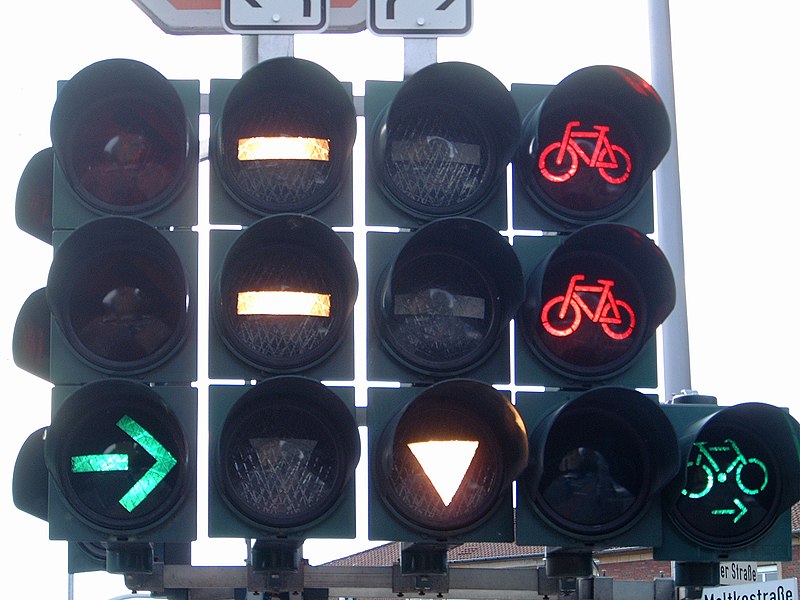Copenhagen Cycle Tracks: Part 2

True believers among the facilities crowd are more easily swayed by emotion rather than logic and statistics. Fear sells bike lanes. Fear pays the bills at some so-called bicycle advocacy organizations. Fear makes people focus on the perceived threat and it makes them ignore contradictory information. In all honesty, I don't know how to adequately address those fears and counteract their emotional impact via the written word. The very best illustration of the practicality of vehicular cycling and the best antidote to misdirected fear is a simple demonstration ride. Obviously, we can't do that here. So all I can offer is logic, statistics, and truth.
Some people get irate when their sacred cow gets gored. And their insistence that we need Copenhagen-style bicycle facilities is a particularly stubborn sacred cow desperately in need of killin'.
I've written previously that there are other factors at work in making Copenhagen (or San Francisco, for that matter) a cycling city where bicyclists enjoy a larger mode share of transportation. Economics plays a big role in the development of utility cycling, as does housing density and urban development. Motor vehicles are relatively more expensive in the EEC mainly due to VAT taxes. Income taxes are onerous by US standards. Not surprisingly, outside the urban core where development is less dense (think – more like a typical American city) there are fewer cyclists. It's a fallacy to think that we could overlay a Copenhagen style cycling system atop one of our cities.
It's bad public policy to enhance safety for one road user while degrading it for another. That's especially true for those pedestrians entering or exiting buses in Copenhagen who have cyclists riding between them and the sidewalk. Their accident rates increased by 1951% and injuries increased by 1762%.
The chart shows that every category of accident and injury increased well above the rate for the increase in cyclists, except for same direction car/cyclist crashes, left turning cyclists, and parked car/cyclist crashes. There's also an increase in the number of crashes between illegally parked cars and cyclists. So despite the insistence than increased numbers of riders led to a proportionate decrease in accidents and injuries, this chart shows the opposite to be true.
Regardless, I believe that on an individual basis, the benefits we receive from cycling in terms of better mental and physical well-being more than offset any risks we face in the street. Since my feet are firmly planted in the reality-based community, I also believe that we should pursue facts and truth rather than fear-mongering.
The construction of cycle tracks has resulted in an 18-20% increase in cycle/moped traffic
...The increase in injuries due to the construction of cycle tracks arises because there are more injuries to pedestrians, cyclists and moped riders at junctions. There has been an increase of 28%, 22% and 37% respectively for these three road user groups.
From Table 1
car against c/m in the same direction
-63 % accidents
-68 % injuries
c/m against c/m in the same direction
+120 % accidents
+201 % injuries
car against right-turning car
+70 % accidents
+177 % injuries
right-turning car against c/m
+129 % accidents
+161 % injuries
right-turning car against pedestrian
+77 % accidents
+84 % injuries
left-turning car against c/m
+48 % accidents
+61 % injuries
left-turning c/m
-41 % accidents
-45 % injuries
c/m against parked car
-38 % accidents
-56 % injuries
entering and exiting bus passengers
+1951 % accidents
+1762 % injuries
c/m against pedestrians
+88 % accidents
+63 % injuries
c/m = cyclists and moped riders, with about 90% cyclists



1 Comments:
Hi
I like the picture of the traffic lights. Where did you get it and if it is yours would your consider making it available on wikipedia?
Post a Comment
<< Home